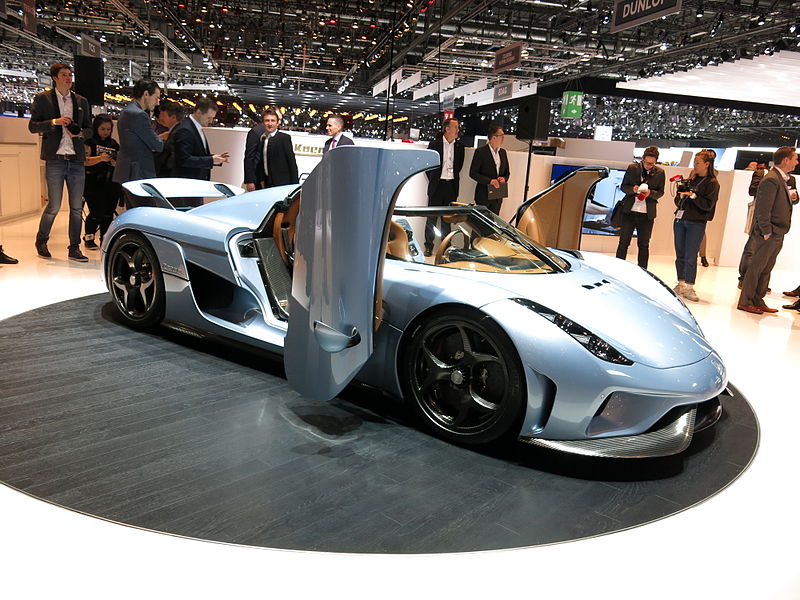| Source: http://koenigsegg.com/koenigsegg-agera-rsr-debuts-in-japan/
The Agera nameplate, introduced by Koenigsegg in 2010 to replace the CCX and CCXR and winner of the TopGear 2010 Hypercar of the Year award, has produced memorable iteration spawning the likes of the Agera R (notably introduced the E85-powered iteration in 2013), Agera S (introduced in 2013 for non-E85 market), One:1 (named after its 1:1 power-to-weight ratio and the brand's 'megacar' as its 1341 hp is equivalent to 1 megawatt) and finally Agera RS (the progeny of Agera R, Agera S and One:1). Agera is a Swedish verb meaning 'to act'. The Agera RS made headline at the 2015 Geneva Motor Show, limited to just 25 examples.
Just recently, the supercar brand from Angelholm, Sweden has launched two special bespoke edition of the Agera RS: (1) the Agera XS, an American version of the Agera RS with bigger carbon fibre rear wing (both the bigger wing and name change were requested by the owner) making its debut at the Monterey Car Week and (2) the Agera RS 'Naraya', a European special named, according to Koenigsegg, after close association to the owner's family name, and made its appearance at Salon Prive Concours d'Elegance.
Now, its the Japanese market who will be getting their bespoke edition, christened as Koenigsegg Agera RSR. The company founder and CEO, Christian von Koenigsegg, spoke at the Agera RSR launch event:
“Japan has been an important market for Koenigsegg since the earliest days of the company. It brought us great pleasure to work with our Japanese clients to bring the Agera RSR to life. The cars they have designed add a new dimension to the already exclusive Agera RS series.”
Limited to just 3 examples for delivery to Japanese Koenigsegg enthusiasts, the Agera RSR was launched on the 5th September by Koenigsegg Japan in Tokyo. The car is based on the 1160 hp Agera RS, alluding to the company's bonkers 5.0 litre twin turbo V8 engine.
The Agera RSR shares close resemblance to the hallow One:1 design cue, particularly the rear wing and air intake scoop.
|
| Source: http://koenigsegg.com/koenigsegg-agera-rsr-debuts-in-japan/
A closer look at the above picture reveals the One:1-style rear wing, which Koenigsegg claims "provides greater downforce and improved handling".
|
| Source: http://koenigsegg.com/koenigsegg-agera-rsr-debuts-in-japan/
The One:1 design cue does not end at the rear wing. According to Koenigsegg, the air intake scoop looks similar to the One:1 'megacar', only shorter to enable "the roof to be stored in the car". The company also claimed that the scoop enhances breathing when you take the RSR up to higher speed, improving power output when you are pressing on.
|
